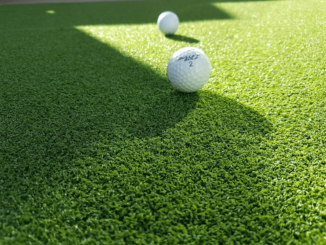
There is an irreversible transition occurring in the world of golf.
Players are moving from golf technicians to world-class athletes. Greg Norman was perhaps the first in modern times to emphasize physical conditioning. Now there is a growing cadre of well conditioned athletes flooding the links and requiring new rules on balls and clubs and increasing distances and difficulties of today’s courses.
This is a healthy challenge for the average golfer and the book titled Golf Anatomy is helping to meet that challenge. It is unique in its approach by providing a visual understanding of what muscles are needed at each point of the golf swing.
This approach is critical to breaking through the wall of ‘information overload’ and endless instruction that the serious golfer finds to yield so little profit from so much effort.
Proper technique in your golf swing can best be developed through a qualified golf instructor along with a proper approach to golf fitness. It follows that golf fitness is best appreciated by an understanding of Golf Anatomy.
The authors of Golf Anatomy are Dr. Craig Davies and Dr. Vince DiSaia. Both are experienced trainers, researchers and clinicians bringing their wealth of knowledge to enhance their reader’s golfing experience.
While an infinite number of swing styles may end with the same result of hitting the ball squarely on the club face, efficiency is the key to a consistent golf swing whether you an amateur or an aspiring golf professional.
Mimicry of your favorite professional golfers is futile and can be counter productive. The key to efficiency is to make your body capable of producing an efficient swing.
The ability to efficiently mesh mechanics into an efficient and reproducible swing is not possible apart from attention to the detail of your own body’s unique capabilities.
Bringing out those capabilities is the purpose of golf conditioning. Golf Anatomy begins to show that mobility and stability are essential foundational elements for a body fit for golf.
However, it could do a better job showing the reader how stability and mobility in each segment changes throughout the golf swing to produce an efficiently sequenced golf swing.
Nevertheless, Golf Anatomy does a good job helping the reader to develop their understanding of their bodies and how it relates to the golf swing.
The following chapter topics helps the reader to logically build his or her understanding of how to build their own unique golf swing:
- The Golfer in motion
- Mobility for optimal swing angles
- Stability for a consistent swing
- Balance and Body awareness for a solid base
- Strength for fatigue free golf
- Explosive power for longer drives
- Preventing injuries in golf’s five problem areas
The information in this book cannot be read and absorbed without becoming interactive with the exercises and motions described in each chapter.
As such, Golf Anatomy provides an essential learning experience for the serious golfer to not only swing efficiently but safely for a pleasurable, life-long golfing experience.
Unless otherwise stated, PONIREVO and/or its licensors DO NOT own any intellectual property rights in the website and material on the website. Majority of the site’s content has been scraped and auto posted by a third party artificial intelligence program —– PONIREVO Creation Team.
Proudly WWW.PONIREVO.COM



